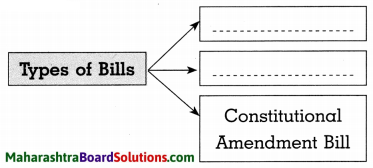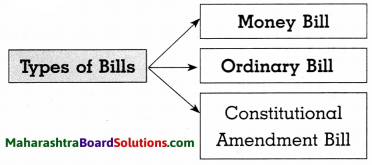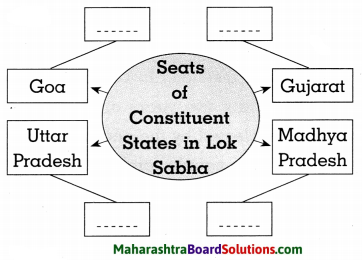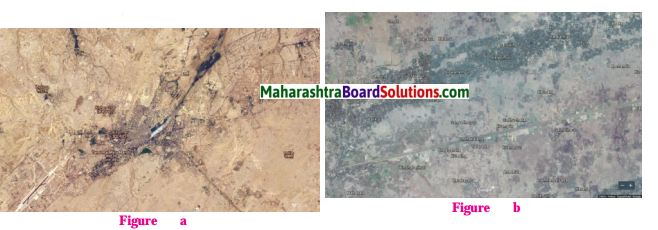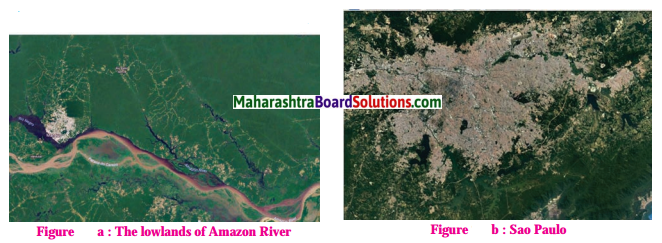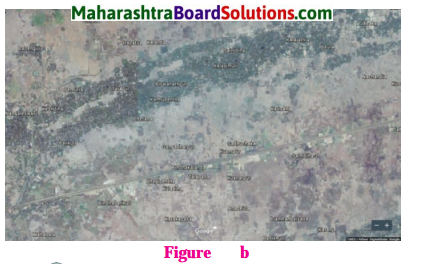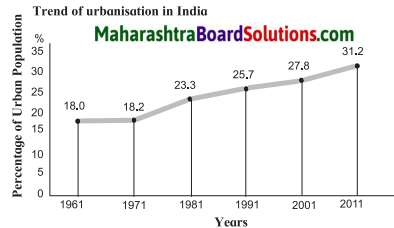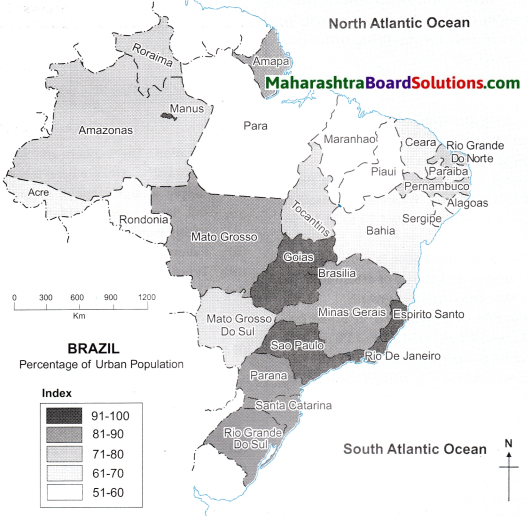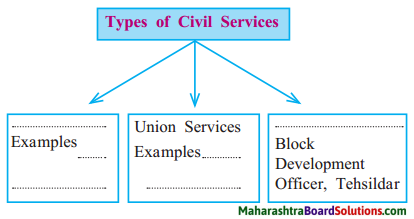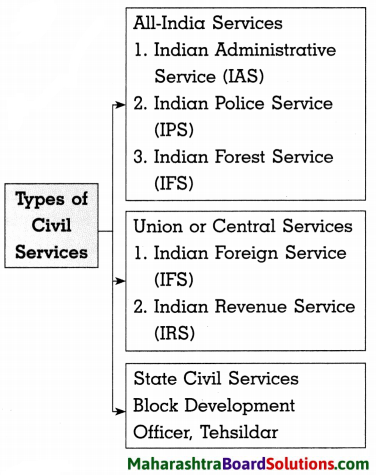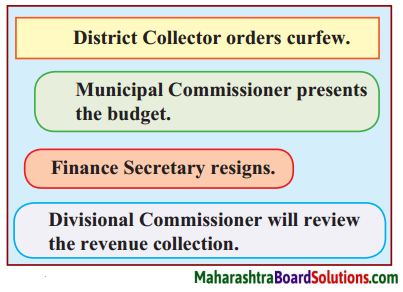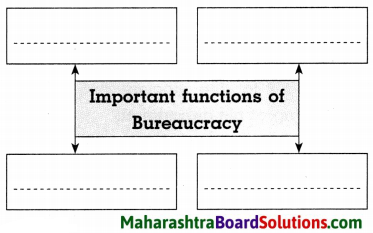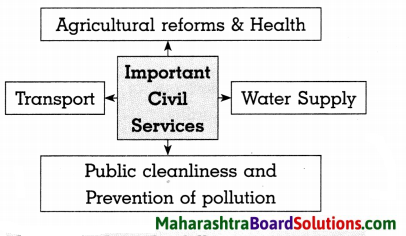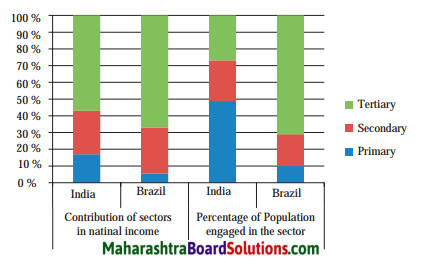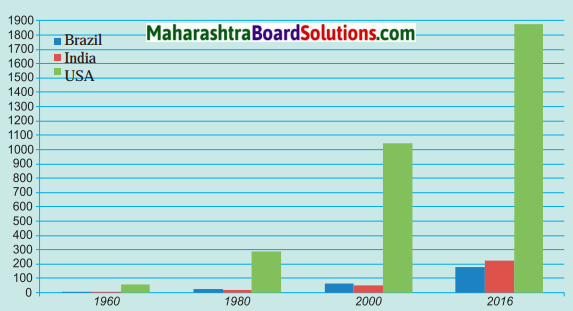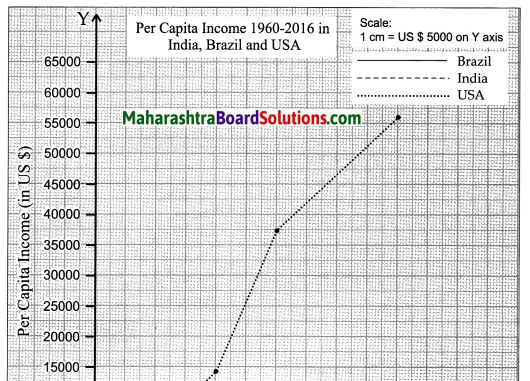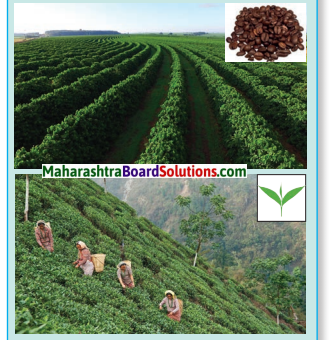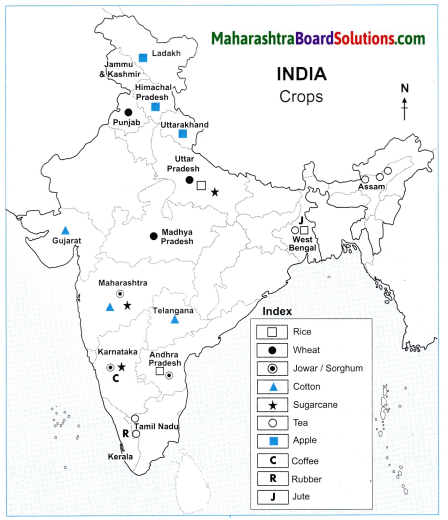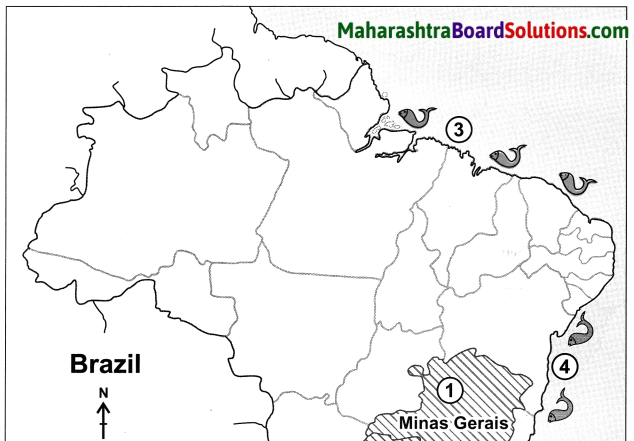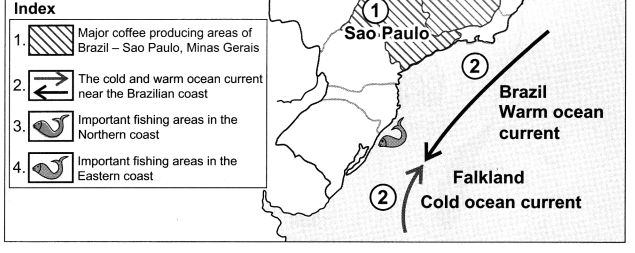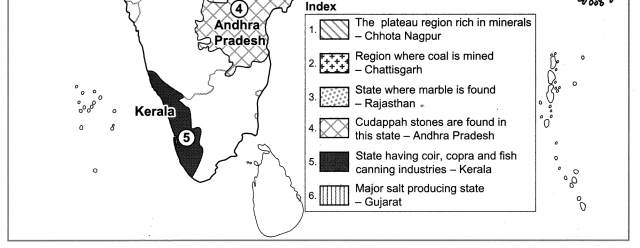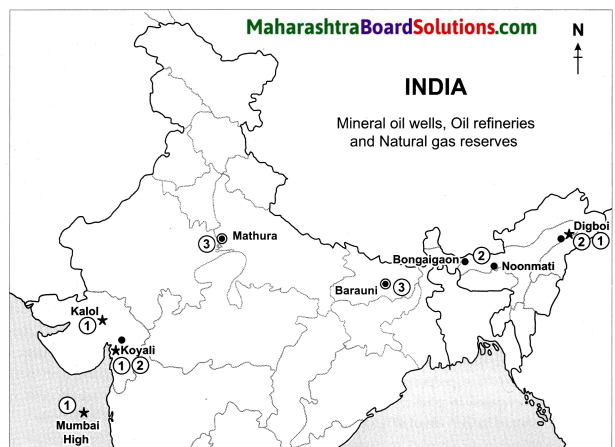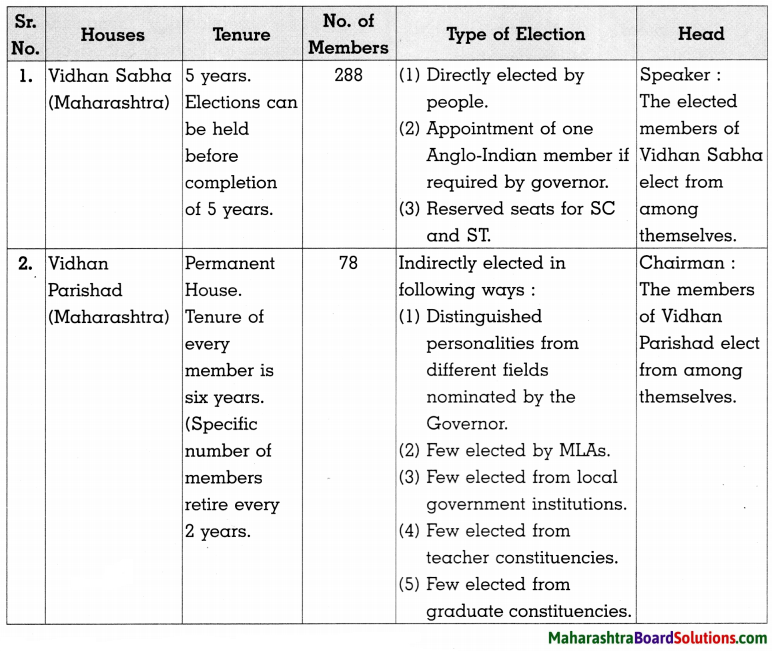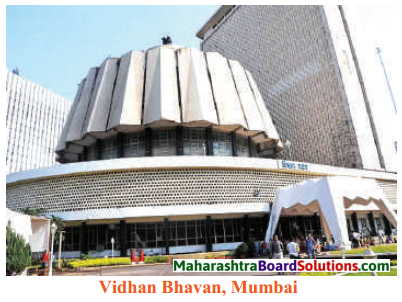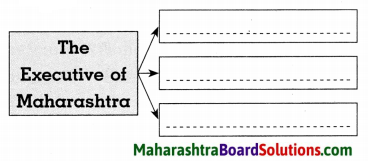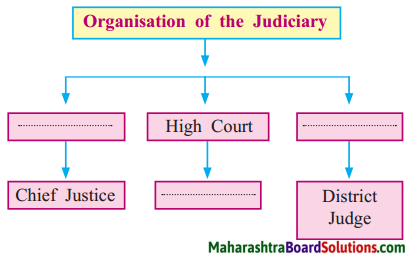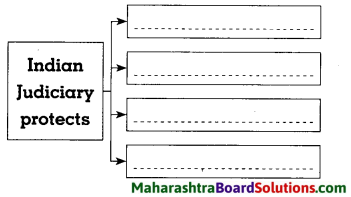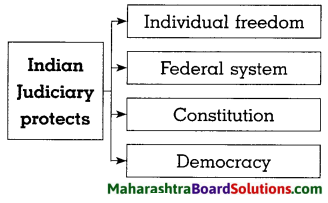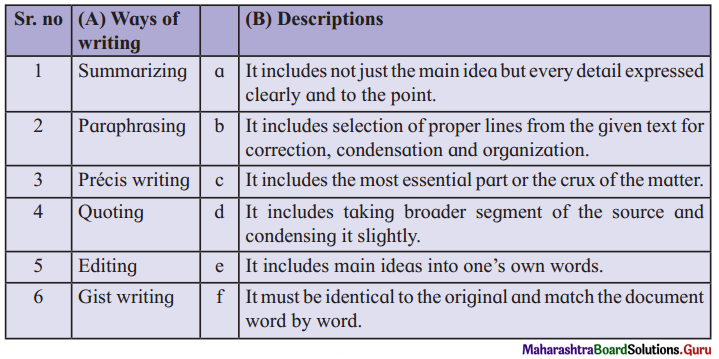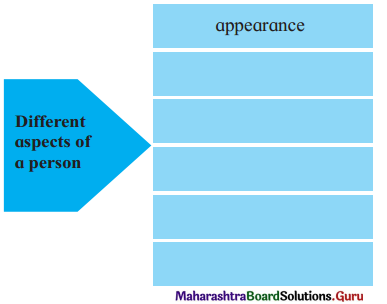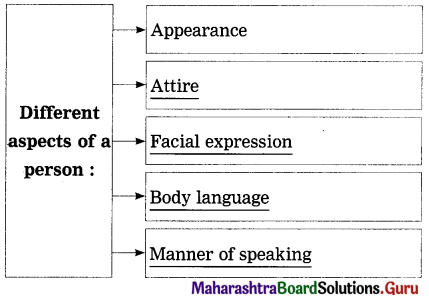Balbharti Maharashtra State Board 11th Biology Textbook Solutions Chapter 3 Kingdom Plantae Textbook Exercise Questions and Answers.
Maharashtra State Board 11th Biology Solutions Chapter 3 Kingdom Plantae
1. Choose the correct option.
Question (A)
Which is the dominant phase in Pteridophytes?
(a) Capsule
(b) Gametophyte
(c) Sporophyte
(d) Embryo
Answer:
(c) Sporophyte
![]()
Question (B)
The tallest living gymnosperm among the following is
(a) Sequoia sempervirens
(b) Taxodium mucronatum
(c) Zamia pygmaea
(d) Ginkgo biloba
Answer:
(a) Sequoia sempervirens
Question (C)
In Bryophytes
(a) sporophyte and gametophyte generation are independent
(b) sporophyte is partially dependent upon gametophyte
(c) gametophyte is dependent upon sporophyte
(d) inconspicuous gametophyte
Answer:
(b) sporophyte is partially dependent upon gametophyte
Question (D)
A characteristic of Angiosperm is
(a) Collateral vascular bundles
(b) Radial vascular bundles
(c) Seed formation
(d) Double fertilization
Answer:
(d) Double fertilization
Question (E)
Angiosperms differ from gymnosperms in having
(a) Vessels in wood
(b) Mode of nutrition
(c) Siphonogamy
(d) Enclosed seed
Answer:
Both (a) Monocotyledons and (d) Enclosed seed
![]()
Question 2.
How you place the pea, jowar and fern at its proper systematic position? Draw a flow chart.
Answer:

Question 3.
Complete the following table.
| Groups of algae | Chlorophyceae | Phaeophyccac | Rhodophyceae |
| 1. Stored food | Starch | ||
| 2. Cell wall | — | Cellulose and algin | |
| 3. Major pigments | — | Chl-a, d and phycoerythrin |
Answer:
| Groups of algae | Chlorophyceae | Phaeophyccac | Rhodophyceae |
| 1. Stored food | Starch | Mannitol, laminarin | Floridean starch |
| 2. Cell wall | Cellulose | Cellulose and algin | Cellulose, pectin |
| 3. Major pigments | Chl-a, b | Chl-a, c, fucoxanthin | Chl-a, d and phycoerythrin |
Question 4.
Differentiate between Dicotyledonae and Monocotyledonae based on the following characters:
a. Type of roots
b. Venation in the leaves
c. Symmetry of flower
Answer:
| Characters | Dicotyledonae | Monocotyledonae |
| 1. Type of roots | Taproots | Fibrous roots |
| 2. Venation in the leaves | Reticulate venation | Parallel venation |
| 3. Symmetry of flower | Tetramerous or Pentamerous symmetry | Trimerous symmetry |
Characters Dicotyledonae Monocotyledonae
1. Type of roots Tap roots Fibrous roots
2. V enation in the leaves Reticulate venation Parallel venation
3. Symmetry of flower Tetramerous or Pentamerous symmetry Trimerous symmetry
![]()
5. Answer the following questions.
Question (A)
We observe that land becomes barren soon after monsoon. But in the next monsoon it flourishes again with varieties we observed in season earlier. How you think it takes place?
Answer:
- After monsoon, plants like mosses (bryophytes), ferns (pteridophytes), small herbaceous plants, etc become dry, due to which land becomes barren.
- However, spores of bryophytes, pteridophytes and seeds of herbaceous plants, grass remain in barren land.
- During next monsoon, these spores and seeds germinate due to availability of water and other favourable conditions.
- Bryophytes and pteridophytes require water for reproduction. Hence they flourish during monsoon season.
- Along with bryophytes and pteridophytes varieties of higher plants like grasses, some seasonal herbs or shrubs grow on barren land during monsoon due to favourable conditions.
Question (B)
Fern is a vascular plant. Yet it is not considered a Phanerogams. Why?
Answer:
- Fern belongs to sub-kingdom Cryptogamae.
- Cryptogams produce spores but do not produce seeds.
- Also, in cryptogams the sex organs are concealed.
- Phanerogams are seed producing plants and their sex organs are visible.
- Hence, fern is a vascular plant. Yet it is not considered a Phanerogams.
Question (C)
Chlamydomonas is microscopic whereas Sargassum is macroscopic; both are algae. Which characters of these plants includes them in one group?
Answer:
- Both Chlamydomonas and Sargassum belong to division Thallophyta.
- Members of Thallophyta range from unicellular (e.g. Chlamydomonas) to multicellular (e.g. Sargassum).
- Both are aquatic plants containing photosynthetic pigments.
- In both Chlamydomonas and Sargassum plant body is not differentiated into root, stem and leaves.
- The stored food is mainly in the form of starch and its other forms.
- Cell wall is made up of cellulose and other components. Due to these characters, both Chlamydomonas and Sargassum are included in one group i.e. Thallophyta.
Question 6.
Girth of a maize plant does not increase over a period of time. Justify.
Answer:
- Maize plant belongs to class monocotyledonae.
- In monocotyledonous plants, vascular bundles are closed type.
- Thus, cambium is absent between xylem and phloem, due to which secondary growth does not occur in these plants.
- Increase in girth of a stem occurs by secondary growth. Thus, girth of a maize plant does not increase over a period of time.
Question 7.
Radha observed a plant in rainy season on the compound wall of her school. The plant did not have true roots but root like structures were present. Vascular tissue was absent. To which group the plant may belong?
Answer:
The plant observed by Radha belongs may belong to division Bryophyta, as it shows root like structures i.e. rhizoids and absence of vascular tissue.
![]()
8. Draw neat labelled diagrams
Question 1.
Draw neat and labelled diagram of:
(A) Spirogyra
(B) Chlamydomonas
Answer:

Question (C)
Draw neat and labelled diagram of Funaria.
Answer:
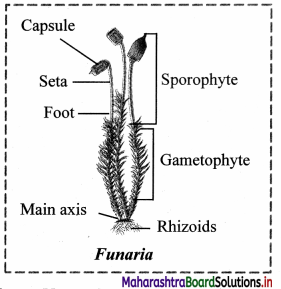
Question (D)
Draw neat and labelled diagram of Nephrolepis.
Answer:
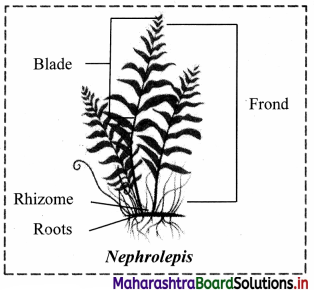
[Note: Frond: Fern leaf, originating from rhizome. It consists of blade and petiole, Blade: Main part of the frond which is rich in chlorophyll]
Question (E)
Draw neat and labelled diagram of Haplontic and Haplo-diplontic life cycle.
Answer:
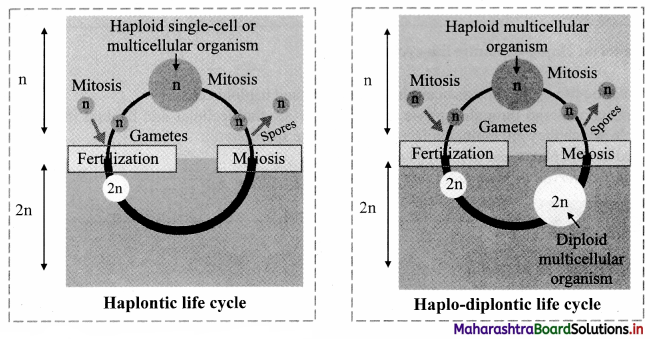
Question 9.
Identify the plant groups on the basis of following features:
A. Seed producing plants
B. Spore producing plants
C. Plant body undifferentiated into root, stem and leaves
D. Plant needs water for fertilization
E. First vascular plants
Answer:
1. Phanerogams (Angiospermae and Gymnospermae)
2. Cryptogams (Thallophyta, Bryophyta and Pteridophyta)
3. Thallophyta, Bryophyta
4. Thallophyta, Bryophyta, Pteridophyta
5. Pteridophytes
Practical/Project:
Question 1.
Study the Nephrolepis plant in detail.
Answer:
- Nephrolepis belongs to division pteridophyta.
- They grow abundantly in cool, shady, moist places.
- Roots are adventitious (fibrous) growing from the underground stem.
- Leaves are well developed on the stem (Rhizome).
- They show presence of well-developed conducting system for transportation of water and food.
- They reproduce asexually by spores produced within sporangia, which are present in sori. These sori are located along the posterior surface of leaflets.
- These plants have neither fruits nor flowers.
- Some ferms are used as food, medicine or as ornamental plants.
![]()
Question 2.
Study the coralloid roots, scale leaf and megasporophyll of Cycas in detail.
Answer:
1. Coralloid roots of Cycas:
Coralloid roots of Cycas show association with blue green algae for nitrogen fixation.
Coralloid roots are coral-like, dichotomously branched and fleshy. They grow upward toward the surface of the soil. These roots arise from the lateral branches of normal roots.
2. Scale leaf of Cycas:
In Cycas leaves are dimorphic i.e. foliage leaves and scale leaves. Scale leaves are minute, membranous and brown. These are non- photosynthetic and provide protection to the stem apex.
3. Megasporophyll of Cycas:
Megasporophylls are usually arranged in compact structures called female cones or female strobili. Megasporophyll contains megasporangia (ovule) which produce megaspores.
[Students are expected to collect more information about coralloid roots, scale leaf and megasporophyll of Cycas.]
Question 10.
Observe the following diagram. Correct it and write the information in your words.
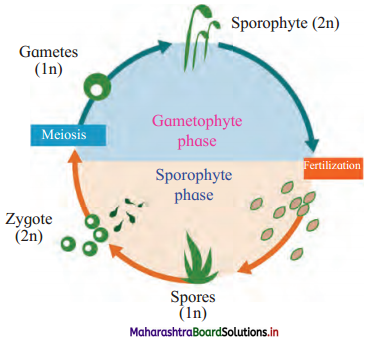
Answer:
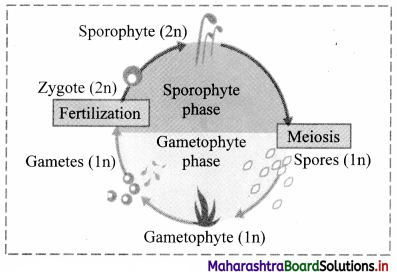
- The given figure indicates alternation of generation.
- The life cycle of a plant includes two generations, sporophytic (diploid = 2n) and gametophytic (haploid = n)
- Some special diploid cells of sporophyte divide by meiosis to produce haploid cells.
- These haploid cells divide mitotically to produce gametophyte.
- On maturation, gametophyte produces male and female gametes which fuse during fertilization and produce diploid zygote.
- Diploid zygote divides by mitosis and forms diploid sporophyte.
11th Biology Digest Chapter 3 Kingdom Plantae Intext Questions and Answers
Can you recall? (Textbook Page No. 19)
Why do we call plants as producers on land?
Answer:
Plants can prepare their own food by the process of photosynthesis. Hence, they are called as producers on land.
Can you recall? (Textbook Page No. 19)
What are differences between sub-kingdoms cryptogamae and Phanerogamae?
Answer:
| Cryptogamae | Phanerogamae |
| 1. Plants belonging to this sub-kingdom are nonflowering. | Plants belonging to this sub-kingdom are flowering. |
| 2. Sex organs are concealed. | Sex organs are visible. |
| 3. These plants do not produce seeds. | These plants produce fruits and seeds. |
| 4. An ovule is not formed. | An ovule is formed. |
| 5. It is further divided into three divisions, viz. | It is further divided into two divisions, viz. |
| 6. Thallophyta, Bryophyta and Pteridophyta. | Gymnospermae and Angiospermae. |
![]()
Observe and Discuss (Textbook Page No. 19)
Collect different water samples of fresh water. Mount them on a glass slide and observe under a compound microscope. Try to identify the organisms which are visible under it.
Answer:
Micro-organisms like Paramoecium, Amoeba, blue-green algae, unicellular algae, filamentous algae can be observed under compound microscope.
[Students are expected to observe different water samples of fresh water under compound microscope and identify the organisms.]
Can you tell? (Textbook Page No. 21)
Give salient features of algae.
Answer:
Algae belongs to division Thallophyta.
Salient features of algae:
1. Habitat: Algae are mostly aquatic, few grow on other plants as epiphytes and some grow symbiotically. Some algae are epizoic i.e. growing or living non-parasitically on the exterior of living organisms.
Aquatic algae grow in marine or fresh water. Most of them are free-living while some are symbiotic.
2. Structure: Plant body is thalloid i.e. undifferentiated into root, stem and leaves. They may be small, unicellular, microscopic like Cblorella (non-motile), Chlamydomonas (motile). They can be multicellular, unbranched, filamentous like Spirogyra or branched and filamentous like Chara. Sargassum is a huge macroscopic sea weed which measures more than 60 meters in length.
3. Cell wall: The algal cell wall contains either polysaccharides like cellulose / glucose or a variety of proteins or both.
Reserve food material: Reserve food is in the form of starch and its other forms.
4. Photosynthetic pigments: Photosynthetic pigments like chlorophyll – a, chlorophyll – b, chlorophyll – c, chlorophyll – d, carotenes, xanthophylls, phycobilins are found in algae.
5. Reproduction: Reproduction takes place by vegetative, asexual and sexual method.
6. Life cycle: The life cycle shows phenomenon of alternation of generation, dominant haploid and reduced diploid phases.
Internet my friend (Textbook Page No. 20)
Write different pigments found in algae.
Answer:
Various types of photosynthetic pigments are found in algae.
1. Chlorophyll-a (Essential photosynthetic pigment) is present in all groups of algae.
2. The accessory pigments are chlorophyll-b, chlorophyll-c, chlorophyll-d, carotenes, xanthophylls and phycobilins. Phycobilins are of two types, i.e. phycocyanin and phycoerythrin.
[Students are expected to collect more information about pigments found in algae from internet.]
Can you tell? (Textbook Page No. 21)
Name the accessory pigments of algae.
Answer:
The accessory pigments are chlorophyll-b, chlorophyll-c, chlorophyll-d, carotenes, xanthophylls and phycobilins. Phycobilins are of two types, i.e. phycocyanin and phycoerythrin.
[Students are expected to collect more information about pigments found in algae from internet.]
Can you tell? (Textbook Page No. 21)
Differentiate between Chlorophyceae and Phaeophyceae.
Answer:
| Chlorophyceae (Green algae) | Phaeophyceae (Brown algae) |
| 1. Photosynthetic pigments are chlorophyll-a, chlorophyll-b. | Photosynthetic pigments are chlorophyll-a, chlorophyll-c and fucoxanthin. |
| 2. Reserve food is in the form of starch. | Reserve food is mannitol and laminarin. |
| 3. e.g. Chlorella, Chlamydomonas, Spirogyra, Chara, I Volvox, Ulothrix | Ectocarpus, Sargassum, Fucus, Laminaria, etc. |
![]()
Can you tell? (Textbook Page No.21)
Enlist examples of Chlorophyceae and Rhodophvceae.
Answer:
1. Examples of Chlorophyceae:
Chlorella, Chlamydomonas, Spirogyra, Char a, Volvox, Ulothrix, etc.
2. Examples of Rhodophyceae:
Chondrus, Batrachospermum, Porphyra, Gelidium, Gracillaria, Polysiphonia, etc.
Internet my friend (Textbook Page No. 21)
Different forms of green, red, brown and blue green algae.
Answer:
1. Forms of green algae:
Unicellular motile: e.g. Chlamydomonas Unicellular non-motile: E.g. Chlorella Colonial forms: e.g. Volvox Filamentous branched: e.g. Cladophora, Chara Filamentous unbranched: e.g. Ulothrix, Spirogyra
2. Forms of red algae:
The red thalli of most of the red algae are multicellular, macroscopic, e.g. Gracilaria, Gelidium, Porphyra, Polysiphonia, etc. .
3. Forms of brown algae:
Simple, branched and filamentous: Sargassum, Fucus, Ectocarpus Profusely branched: Laminaria, Dictyota, Kelps (Seaweed)
4. Forms of blue-green algae:
Unicellular, colonial or filamentous, freshwater or marine water or terrestrial algae.
[Note: Blue-green algae are cyanobacteria which are photosynthetic autotrophs.]
[Students are expected to collect more information from internet.]
Internet my friend (Textbook Page No. 20)
Enlist the forms of filamentous algae.
Answer: The forms of filamentous algae:
1. Filamentous branched: e.g. Cladophora, Chara, Ectocarpus, Dictyota, etc.
2. Filamentous unbranched: e.g. Ulothrix, Spirogyra, etc.
Internet my friend (Textbook Page No. 21)
Economic importance of algae.
Answer:
(a) Many species of algae are used as food. For e.g. Chlorella (rich in cell proteins hence used as food supplement, even by space travelers), Sargassum, Laminaria, Porphyra, etc.
(b) Alginic acid is produced commercially from Kelps.
(c) Hydrocolloids like algin and carrageen are obtained from brown algae and red algae respectively.
(d) ‘Agar’ which is used as solidifying agent in tissue culture is obtained from red algae like Gelidium and Gracilaria.
(e) Brown algae like sea weeds are used a fodder for sheep, goat, etc.
[Students are expected to collect more information about the economic importance of algae.]
(f) Role of algae in environment.
Answer:
(a) Being photosynthetic, algae help in increasing the level of dissolved oxygen in their immediate environment.
(b) Algae are primary producers of energy rich compounds which forms the basis of food cycles in aquatic animals.
[Students are expected to find out more information about the role of algae in environment on internet.]
Can you recall? (Textbook Page No. 19)
Differentiate between Thallophytes and Bryophytes.
Answer:
| Thallophytes | Bryophytes |
| 1. Mostly aquatic in habitat. | Mostly terrestrial, occurs on moist and shady places. |
| 2. Thallus may be unicellular or multicellular. | Thallus is multicellular. |
| 3. Motile and non-motile forms are present. | Non-motile forms present, except male gametes. |
| 4. Rhizoids are absent. | Rhizoids are present. |
![]()
Can you tell? (Textbook Page No. 23)
Why Bryophyta are called amphibians of Plant Kingdom?
Answer:
Members of Bryophyta are mostly terrestrial plants which depend on water for fertilization and completion of their life cycle. Hence, they are called ‘amphibians of Plant Kingdom’.
Observe and Discuss (Textbook Page No. 21)
You may have seen Funaria plant in rainy season. Why is it called amphibious plant?
Answer:
Funaria belongs to division Bryophyta.
It is a terrestrial plant but requires water for fertilization and completion of its life cycle. Hence, it is called as an amphibious plant.
Observe and Discuss (Textbook Page No. 23)
You may have seen the various plants which do not bear flowers, fruits and seeds but they have well developed root, stem and leaves. Discuss.
Answer:
1. The plants which do not bear flowers, fruits and seeds, but have true roots, stem and leaves belong to division Pteridophyta.
2. These plants are cryptogams as they do not produce seeds and flowers.
3. They have primitive conducting system.
Can you tell? (Textbook Page No. 23)
Pteridophytes are also known as vascular Cryptogams – Justify.
Answer:
1. The reproductive organs of pteridophytes are hidden.
2. Pteridophytes do not produce flowers, fruits and seeds. They reproduce asexually by forming spores and sexually by forming gametes, hence they belong to Cryptogamae.
3. These plants possess a primitive conducting system. Thus, conduction of water and food occurs through vascular tissue.
Hence, Pteridophytes are also known as vascular Cryptogams.
Can you tell? (Textbook Page No. 23)
Give one example of aquatic and xerophytic Pteridophytes.
Answer:
Habitat: Pteridophytes grow in moist and shady places, e.g. Ferns, Horsetail. Some are aquatic (Azolla, Marsilea), xerophytic (Equisetum) and epiphytic (Lycopodium).
![]()
Can you recall? (Textbook Page No. 19)
Give any two examples of Pteridophyta.
Answer:
Nephrolepis, Selaginella, Azolla, Marsilea, Equisetum, Lycopodium, Psilotum, Dryopteris, Pteris, Adiantum.
Can you tell? (Textbook Page No. 25)
Give general characters of Gymnosperms and Angiosperms.
Answer:
1. General characters of Gymnosperms:
(a) Types: Most of the gymnosperms are evergreen, shrubs or woody trees.
(b) Vascular tissues: They are vascular plants having xylem with tracheids and phloem with sieve cells.
(c) Flower: These are primitive group of flowering plants producing naked seeds.
(d) Body: The plant body is sporophyte. It is differentiated into root, stem and leaves.
(e) Roots: The root system is tap root type. In some gymnosperms, the roots form symbiotic association with other life forms. Coralloid roots of Cycas show association with blue green algae and roots of Pinus show association with endophytic fungi called mycorrhizae.
(f) Stem: In gymnosperms, stem is mostly erect, aerial, solid and cylindrical. Secondary growth is seen in Gymnosperms due to the presence of cambium. In Cycas it is usually unbranched, while in conifers it is branched, (e.g. Pinus, Cedrus).
(g) Leaves: The leaves are dimorphic. The foliage leaves are green, simple needle like or pinnately compound, whereas scale leaves are small, membranous and brown.
(h) Spores: Spores are produced by microsporophyll (Male) and megasporophyll (Female).
(ii) General characters of angiosperms:
(a) Habitat: Angiosperms is a group of highly evolved plants, primarily adapted to terrestrial habitat.
(b) Alternation of generations: Angiosperms show heteromorphic alternation of generation in which the sporophyte is diploid, dominant, autotrophic and independent. The gametophytes (male or female) are haploid, reduced and concealed.
(c) Spores and Sporophylls: Angiosperms are heterosporous. Microspores (commonly called pollens) are formed in microsporangia (or anthers). They develop in highly specialized microsporophyll or stamens while megaspores are formed in megasporangia (or ovules) borne on highly specialized megasporophyll called carpel.
(d) Flower: Besides the essential whorls of microsporophylls (androecium) and megasporophylls (gynoecium), there are accessory whorls namely, calyx (sepals) and corolla (petals) arranged together to form flowers.
Observe and Discuss (Textbook Page No. 23)
Observe all garden plants like Cycas, Thuja, Pinus, Sunflower, Canna and compare them. Note similarities and dissimilarities among them.
Answer:
1. When we observe garden plants like Cycas, Thuja, Pinus, Sunflower, Canna, following similarities can be observed:
Plant body is divided into root, stem and leaves.
2. When we observe garden plants like Cycas, Thuja, Pinus, Sunflower, Canna, following dissimilarities can be observed:
(a) In Cycas, Thuja and Pinus seeds are not enclosed within a fruit, whereas in Sunflower and Canna seeds are enclosed within a fruit.
(b) Plants like Cycas, Thuja, Pinus show cones bearing microsporophylls and megasporophylls, whereas sunflower and Canna plant bear flowers.
(c) In Cycas, Thuja and Pinus green, simple needle like or pinnately compound foliage leaves and brown, membranous scaly leaves can be observed, whereas in Sunflower, Canna green foliage leaves can be observed.
![]()
Can you recall? (Textbook Page No. 24)
What are the salient features of angiosperms?
Answer:
(ii) General characters of angiosperms:
(a) Habitat: Angiosperms is a group of highly evolved plants, primarily adapted to terrestrial habitat.
(b) Alternation of generations: Angiosperms show heteromorphic alternation of generation in which the sporophyte is diploid, dominant, autotrophic and independent. The gametophytes (male or female) are haploid, reduced and concealed.
(c) Spores and Sporophylls: Angiosperms are heterosporous. Microspores (commonly called pollens) are formed in microsporangia (or anthers). They develop in highly specialized microsporophyll or stamens while megaspores are formed in megasporangia (or ovules) borne on highly specialized megasporophyll called carpel.
(d) Flower: Besides the essential whorls of microsporophylls (androecium) and megasporophylls (gynoecium), there are accessory whorls namely, calyx (sepals) and corolla (petals) arranged together to form flowers.
Can you recall? (Textbook Page No. 24)
What is double fertilization?
Answer:
(a) Double fertilization is a characteristic feature of angiosperms.
(b) In this process one male gamete fuses with egg cell and another male gamete fuses with secondary nucleus, to form an embryo and endosperm respectively.
Can you recall? (Textbook Page No. 24)
Explain in brief the two classes of Angiosperms? Draw and label one example of each class.
Answer:
Two classes of Angiosperms are Dicotyledonae and Monocotyledonae.
а. Dicotyledonae:
- These plants have two cotyledons in their embryo.
- They have a tap root system and the stem is branched.
- Leaves show reticulate venation.
- Flowers show tetramerous or pentamerous symmetry.
- Vascular bundles are conjoint, collateral and open type.
- Cambium is present between xylem and phloem for secondary growth.
- In dicots, secondary growth is commonly found. e. g. Helianthus annuus (Sunflower)
b. Monocotyledonae:
- These plants have single cotyledon in their embryo.
- They have adventitious root system and stem is rarely branched.
- Leaves generally have sheathing leaf base and parallel venation.
- Flowers show trimerous symmetry.
- The vascular bundles are conjoint, collateral and closed type.
- Cambium is absent between xylem and phloem.
- In Monocots, except few plants secondary growth is absent, e.g. Zea mays (Maize)
![]()
Try This (Textbook Page No. 24)
Study the leaves of Hibiscus, Peepal, Canna, Grass and Tulsi. Classify them as Monocot and Dicot.
Answer:
| Monocot leaves | Dicot leaves |
| Canna. Grass (Parallel venation) | Hibiscus, Peepal, Tulsi (Reticulate venation) |
Can you tell? (Textbook Page No. 25)
(i) Distinguish between Dicotyledonae and Monocotyledonae.
Answer:
Spores and Sporophylls: Angiosperms are heterosporous. Microspores (commonly called pollens) are formed in microsporangia (or anthers). They develop in highly specialized microsporophyll or stamens while megaspores are formed in megasporangia (or ovules) borne on highly specialized megasporophyll called carpel.
(ii) Why do Dicots show secondary growth while Monocots don’t?
Answer:
(a) In dicots, vascular bundles are conjoint, collateral and open type. Cambium is present between xylem and phloem for secondary growth.
(b) Whereas in monocots, vascular bundles are conjoint, collateral and closed type. Thus, due to absence of cambium, secondary growth does not occur in majority of monocots.
Observe and Discuss (Textbook Page No. 23)
Which differences did you notice between Gymnosperms and Angiosperms?
Answer:
| Gymnosperms | Angiosperms |
| 1. In gymnosperms, the seeds arc naked. | In angiosperms, the seeds are enclosed within the fruit. |
| 2. Plants are evergreen, shrubs or woody trees. | Plants are annual, biennial or perennial herbs, shrubs or trees, either woody or herbaceous. |
| 3. Xylem is made up of tracheids only. | Xylem is made up of vessels and tracheids. |
| 4. Phloem is with sieve cells only. | Phloem is with sieve tubes and companion cells. |
| 5. Usually two types of leaves are present, i.e. green foliage leaves and scale leaves. | Leaves are of usually one type only, such as green foliage leaves. |
| 6. Double fertilization absent. | Double fertilization occurs. |
Can you tell? (Textbook Page No. 26)
What is alternation of generations?
Answer:
The sporophytic and gametophytic generations generally occur alternately in the life cycle of a plant. This phenomenon is called alternation of generations.
![]()
Can you tell? (Textbook Page No. 26)
Which phase is dominant in the life cycle of Bryophyta and Pteridophyta?
Answer:
In the life cycle of Bryophyta, gametophyte is the dominant phase whereas in the life cycle of Pteridophyta, sporophyte is the dominant phase.


